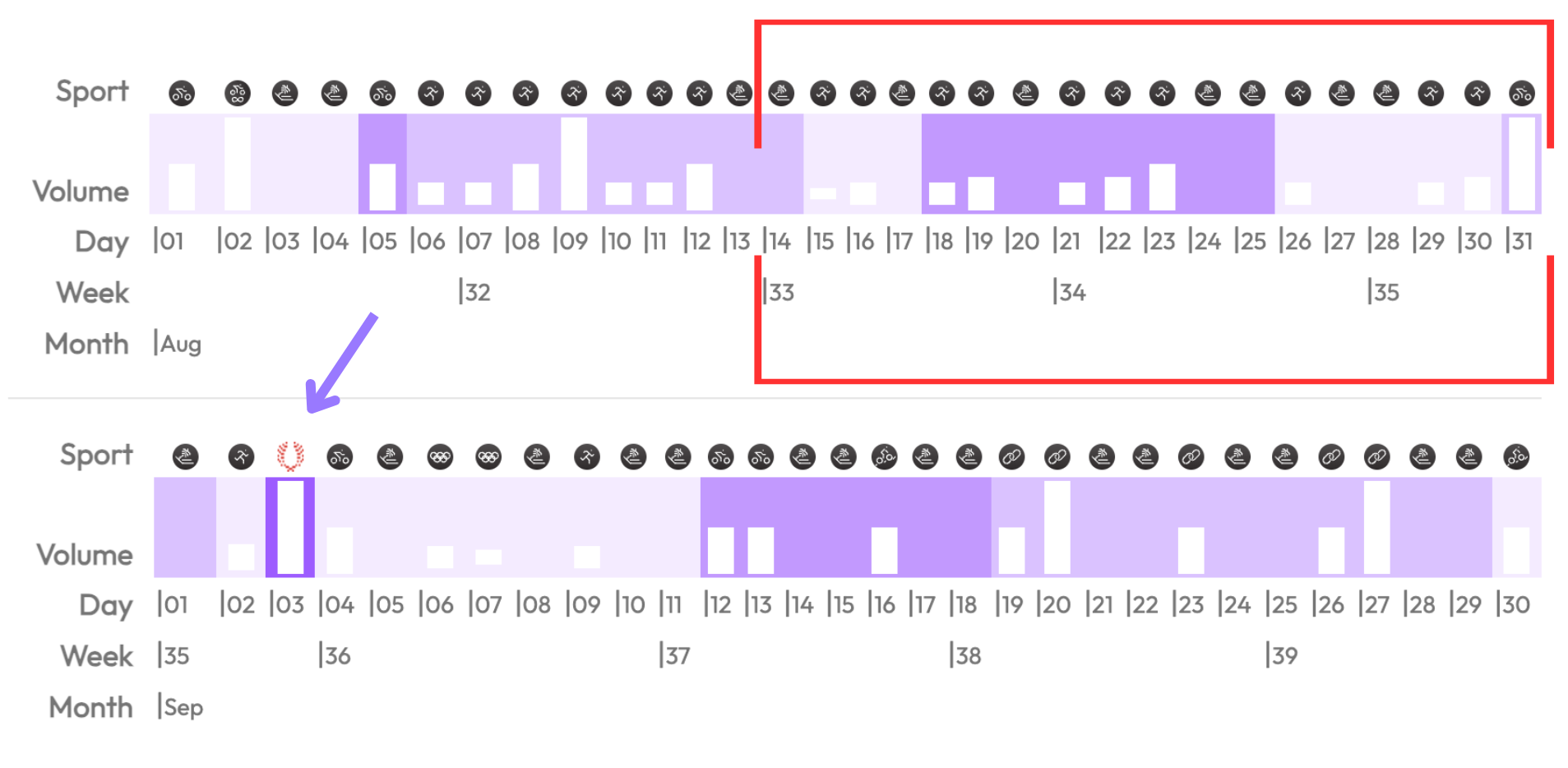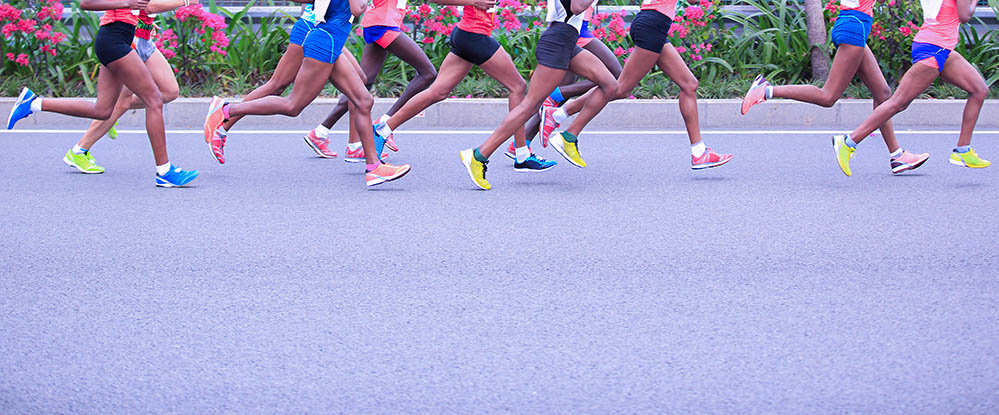Finding the right balance for optimal race preparation is an art. This article outlines the basics for being in top shape on day X.
1. Peaking: the strategy for achieving top performance
To reach your best level, you need to prepare specifically for the highlights of your season. 2PEAK divides the season into different periods or phases. The foundation is formed by the basic training periods. This is followed by the specific preparation periods and finally the competition periods. The closer the competition gets, the more specific and intense the training becomes.
This intensification of training for the main race preparation is called ‘peaking‘. The goal is to be in top shape for day X. 2PEAK ensures this training intensification on the basis of everything that has been done before and takes into account the athlete’s individual regeneration capacity (2PEAK regeneration battery).
Following the unusual training stimulus in the last demanding training phase, the athlete must pass through the so-called supercompensation phase: this process consists of an adaptation of the body to progressively increasing workloads. After training, the fatigued body goes through a regeneration phase, after which performance increases from the initial level.
2. Tapering – deliberate recovery just before the race
By ‘tapering‘ we mean an unloading phase that takes place shortly before the main event, to ensure that you have recovered well and feel completely ready for the race. The trick is to find the right moment. There is also the risk of reducing the load too much or not enough. According to current practice, a 40-50% reduction in volume is sufficient. The percentage to be reduced also depends on age, training experience, weekly volume, number of training sessions per week and training intensity.
Remember to keep the training intensity high. There are different modalities, such as interval training, which are useful to prevent the body from going into full recovery mode. Whether to reduce the load depends on the duration and intensity of the race. Before a long and difficult event such as an Ironman, the tapering phase usually lasts two weeks, but before a 10 km race, only a few days. By how much should the volume be reduced compared to the normal training volume? If you train 4 hours per week, you will not need the same recovery time as a long-distance triathlete who trains 25 hours or more per week. 2PEAK automatically adapts the tapering phase according to the event and training.

TAPERING TIPS
To be successful in a race, your training must be designed and built over the long term. You do not make great progress just before an event; on the contrary, you can make fatal mistakes.
- Reduce the duration and amount of training, but still perform intensive sessions (which can be relatively short and race-oriented).
- Do not experiment before (or during) an event.
- Keep calm and balanced. Remember that long-term training always produces results.
- Do not try to make up for missed training just before an event.
- Supplement tapering with other regeneration measures such as sleep, massages, sauna sessions, …
